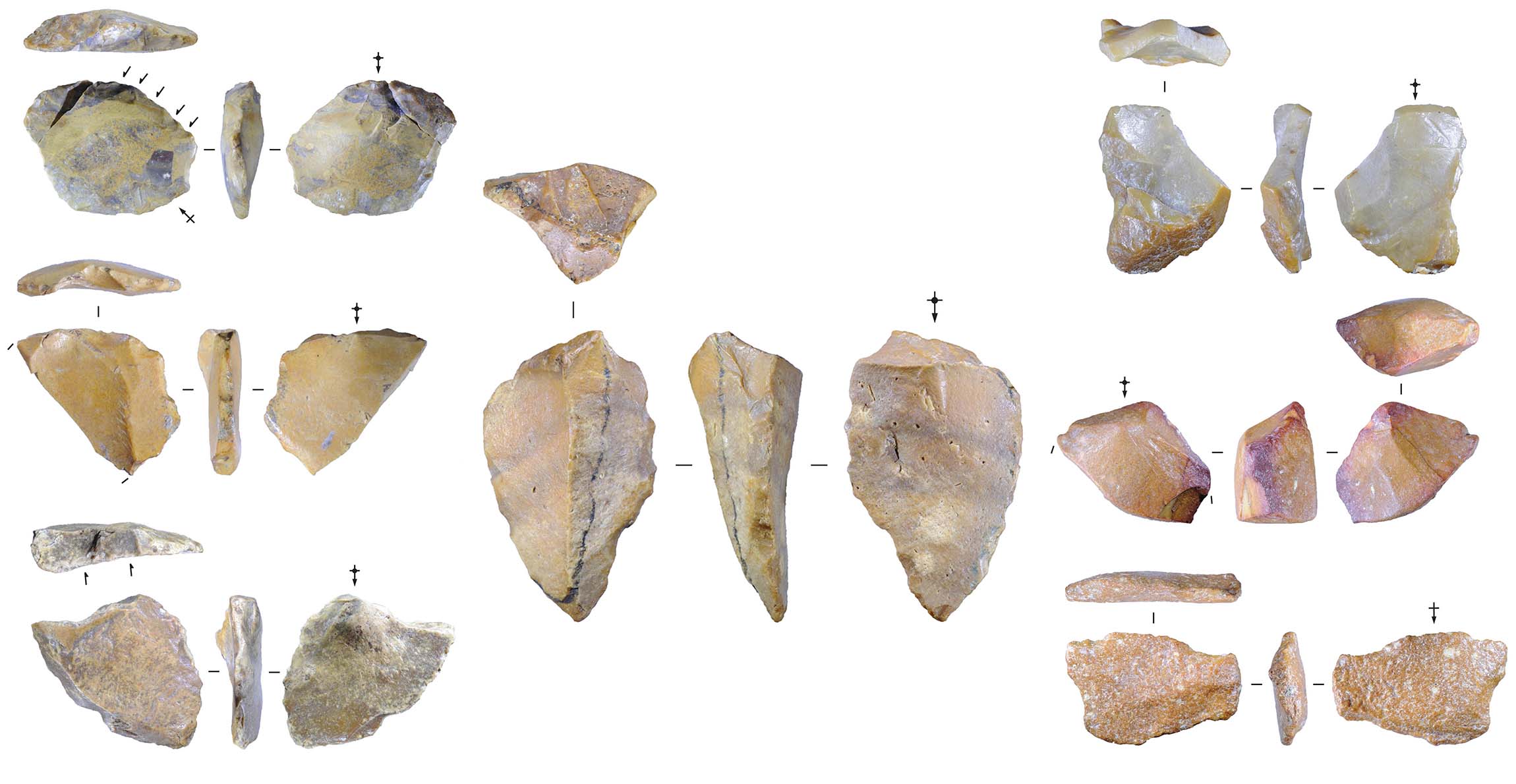By James Ashworth
A collection of stone tools has provided an insight into the spread of early human species.
Long before our species arrived in the region, our distant relatives were crossing deep water on the way to new lands.
A human species arrived on a major Indonesian island more than 800,000 years earlier than previously known.
Stone tools have been found on one of the world’s largest islands, Sulawesi, which is part of a distinct region known as Wallacea. This scattering of islands between Borneo and Australia have a unique roster of animals and plants that is different from the continents that lie either side.
Wallacea’s distinct biodiversity has developed because of the deep-water channels that separate it from the larger landmasses nearby, providing hard barriers that few species can cross. This included our own, Homo sapiens, which only overcame them in the past 100,000 years.
But a recently discovered archaeological site on Sulawesi known as Calio shows that other human species made this journey much earlier. The tools found there have been dated at between 1–1.5 million years old, much older than the next oldest tools from about 194,000 years ago.
Professor Adam Brumm, who co-authored the new research, says that the region plays an important part in understanding how our distant relatives spread across the world.
“This discovery adds to our understanding of the movement of extinct humans across the Wallace Line, a transitional zone beyond which unique and often quite peculiar animal species evolved in isolation,” Adam says.
“It’s a significant piece of the puzzle, but the Calio site has yet to yield any hominin fossils. So, while we now know there were toolmakers on Sulawesi a million years ago, their identity remains a mystery.”
The findings of the study were published in the journal Nature.
What was found on Sulawesi?
Calio was first excavated in 2019 after a large stone flake was found in a cornfield near the village of Ujung. Digs over the following years revealed that the area was a place where ancient humans lived, hunted and made tools.
In total, seven tools were discovered at the site, which are thought to have been made from large pebbles found in nearby riverbeds. Though they might look natural at first glance, closer study reveals that these tools have been specifically shaped by removing certain parts of the stone to make them useful for a range of purposes.
Eventually, the tools ended up in a nearby river, where they were quickly buried in the sediment alongside crocodile and shark teeth and the jawbone of a pig-like animal called Celebochoerus. This jawbone was crucial to help date the site through methods known as uranium series dating (USD) and electron-spin resonance (ESR).
USD uses the proportion of uranium isotopes in the bone to provide an age for a fossil, but only provides a minimum estimate. ESR helps to narrow it down by examining the radiation dose that the fossil has experienced while it’s been buried.
The Celebochoerus was found to have lived at some point from 1.04–1.48 million years ago. This means that ancient humans must also have been living in Sulawesi at this time.
Who made the Calio tools?
The discovery of these artefacts brings Sulawesi into line with the island of Flores to its south, where million-year-old tools have also been discovered. Both sets of tools show that ancient humans were living in Wallacea in the distant past, but identifying a species is difficult without fossils.
While miniature human species such as Homo floresiensis and Homo luzonensis once lived on the islands of southeast Asia, they were around too recently to have made these tools. However, Professor Chris Stringer, one of our experts in human evolution, explains that their relatives are a possible candidate.
“Over one million years ago, it’s possible that the ancestors or relatives of species like H. floresiensis and H. luzonensis might have been living on Sulawesi,” Chris says. “Although it’s often thought that H. floresiensis’ ancestors dispersed via Java, ancient oceans currents would probably have favoured dispersal from northern islands such as from Sulawesi.”
“Alternatively, a species known as Homo erectus was living in regions like Java when those Sulawesi toolswere produced. So, they could have made them as well.”
Just as the identity of the toolmakers remains a mystery, so does the way these humans got to Sulawesi in the first place. It’s possible they had some knowledge of raft building to make the journey between islands and built up resources to survive the trip.
Alternatively, they might have been carried across on rafts of vegetation during severe storms or tsunamis, which is believed to have helped other animals and plants disperse across the region.
To find out more about these ancient pioneers, the next step would be to find human fossils on Sulawesi from over a million years ago. Though the humid climate generally stops remains being preserved, the island’s mountainous interior contains many caves that could have allowed teeth and bone to survive.
